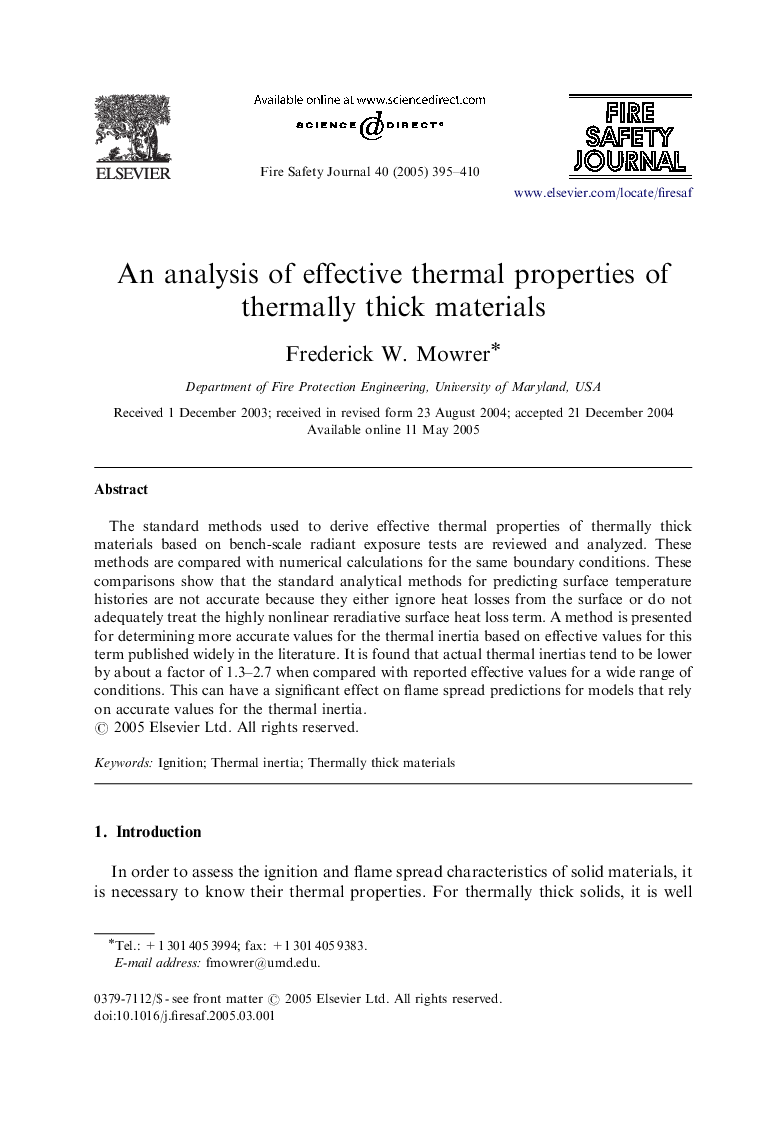| Article ID | Journal | Published Year | Pages | File Type |
|---|---|---|---|---|
| 10287874 | Fire Safety Journal | 2005 | 16 Pages |
Abstract
The standard methods used to derive effective thermal properties of thermally thick materials based on bench-scale radiant exposure tests are reviewed and analyzed. These methods are compared with numerical calculations for the same boundary conditions. These comparisons show that the standard analytical methods for predicting surface temperature histories are not accurate because they either ignore heat losses from the surface or do not adequately treat the highly nonlinear reradiative surface heat loss term. A method is presented for determining more accurate values for the thermal inertia based on effective values for this term published widely in the literature. It is found that actual thermal inertias tend to be lower by about a factor of 1.3-2.7 when compared with reported effective values for a wide range of conditions. This can have a significant effect on flame spread predictions for models that rely on accurate values for the thermal inertia.
Keywords
Related Topics
Physical Sciences and Engineering
Engineering
Civil and Structural Engineering
Authors
Frederick W. Mowrer,
